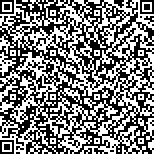| 本文已被:浏览 1994次 下载 1037次 |

码上扫一扫! |
| 长链非编码RNA-8439促进肝癌细胞多能因子nanog的表达 |
| 胡贻隽1,2,刘淑鹏2,程凯2,徐贵霞2,胡晶晶1*,刘善荣1* |
|
|
(1. 海军军医大学(第二军医大学)长海医院实验诊断科, 上海 200433;
2. 海军军医大学(第二军医大学)长海医院临床实验中心, 上海 200433
*通信作者) |
|
| 摘要: |
| 目的 探讨长链非编码RNA(lncRNA)-8439与多能因子nanog的关系,及lncRNA对肝癌细胞生长的影响。方法 在肝癌原发灶与转移灶组织中,通过lncRNA测序与生物信息学分析方法筛选与多能因子nanog、oct4、sox2相关的差异表达lncRNA。采用实时荧光定量PCR(qPCR)法检测差异表达的lncRNA在人肝癌细胞系Hep3B、Huh7细胞及对应的肿瘤悬浮球中的表达量。通过生物信息学分析明确lncRNA-8439与nanog结合的可能性,采用荧光原位杂交方法观察lncRNA-8439在Hep3B和Huh7细胞中的定位。敲低lncRNA-8439后,采用qPCR和蛋白质印迹法检测2种肝癌细胞中nanog的表达,观察悬浮球生长情况。过表达lncRNA-8439后,采用qPCR和蛋白质印迹法检测2种肝癌细胞中nanog的表达。结果 筛选到9种与多能因子相关的差异表达lncRNA,但仅lncRNA-8439在2种肝癌细胞悬浮球中呈一致的上调表达,与对应的贴壁细胞相比差异均有统计学意义(P均<0.01)。LncRNA-8439的3'端有nanog结合位点。LncRNA-8439在细胞核中表达,细胞质中并无分布。敲低lncRNA-8439后,2种肝癌细胞中nanog表达量在RNA与蛋白水平均降低(P均<0.01),肝癌肿瘤悬浮球数量减少。过表达lncRNA-8439后,2种肝癌细胞中nanog表达量在RNA与蛋白水平均增加(P均<0.01)。结论 LncRNA-8439通过促进多能因子nanog的表达影响肿瘤细胞的自我更新能力,可能是导致肝癌侵袭和转移的原因。 |
| 关键词: 肝细胞癌 长链非编码RNA lncRNA-8439 多能因子nanog 肿瘤转移 |
| DOI:10.16781/j.0258-879x.2018.12.1309 |
| 投稿时间:2018-07-25修订日期:2018-09-20 |
| 基金项目:国家自然科学基金(81402452),上海市自然科学基金(14ZR1408500),国家杰出青年科学基金(81425019). |
|
| Long non-coding RNA-8439 up-regulates expression of pluripotency factor nanog in hepatoma carcinoma cells |
| HU Yi-jun1,2,LIU Shu-peng2,CHENG Kai2,XU Gui-xia2,HU Jing-jing1*,LIU Shan-rong1* |
(1. Department of Laboratory Medicine, Changhai Hospital, Navy Medical University(Second Military Medical University), Shanghai 200433, China;
2. Clinical Research Center, Changhai Hospital, Navy Medical University(Second Military Medical University), Shanghai 200433, China
*Corresponding authors) |
| Abstract: |
| Objective To explore the relationship between long non-coding RNA (lncRNA)-8439 and pluripotency factor nanog, and to investigate the potential effect of lncRNA-8439 on the growth of hepatoma carcinoma cells. Methods RNA-sequencing and bioinformatics tools were used to screen the differentially expressed lncRNA related to pluripotency factors (nanog, oct4 and sox2) in primary and metastatic tissues of hepatocellular carcinoma. The differentially expressed lncRNA levels were tested by real-time quantitative PCR (qPCR) in human hepatoma carcinoma cell lines, Hep3B and Huh7, and their corresponding suspended spheres. The potential of binding of lncRNA-8439 and nanog was determined using bioinformatics tools. Localization of lncRNA-8439 in the Hep3B and Huh7 cells was observed by fluorescence in situ hybridization. After knocking down lncRNA-8439, the expression levels of nanog in the Hep3B and Huh7 cells were detected by qPCR and Western blotting, and the growth status of suspended spheres was observed. After overexpressing lncRNA-8439, the expression levels of nanog were measured by qPCR and Western blotting in the two kinds of cancer cells. Results A total of 9 differentially expressed lncRNAs related to pluripotency factors were identified, while only lncRNA-8439 expression was significantly higher in the suspended spheres of two kinds of cancer cells compared with their corresponding adherent cells (both P<0.01). LncRNA-8439 had binding sites of nanog at its 3'end. LncRNA-8439 was located in the nucleus of the Hep3B and Huh7 cells but not in the cytoplasm. After knocking down lncRNA-8439, the RNA and protein expression levels of nanog were significantly reduced in the Hep3B and Huh7 cells (all P<0.01), and the number of suspended spheres was also reduced. After overexpressing lncRNA-8439, the RNA and protein expression levels of nanog were significantly up-regulated in the two kinds of cancer cells (all P<0.01). Conclusion LncRNA-8439 affects self-renewal ability of hepatoma carcinoma cells through up-regulating expression of pluripotency factor nanog, which may be the cause of invasion and metastasis of hepatocellular carcinoma. |
| Key words: hepatocellular carcinoma long non-coding RNA lncRNA-8439 pluripotency factor nanog neoplasm metastasis |
.jpg)
.jpg)